As a real estate expert deeply rooted in Chicago, I’ve always been captivated by the architectural stories embedded in the city’s historic homes. These structures are not mere buildings; they are artworks crafted by some of the most brilliant minds in architecture. Let’s embark on a journey through time, exploring the unique styles and legacies of the architects who shaped Chicago’s residential landscape.
Frank Lloyd Wright: Synthesizing Form and Function
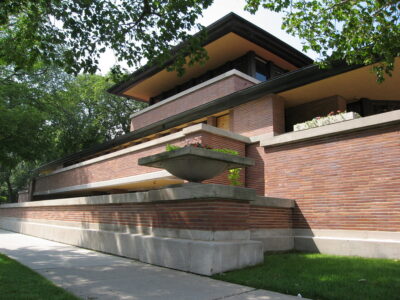
Robie House
Wright’s Robie House, located at 5757 S Woodlawn Ave, is a testament to his genius in integrating buildings with their natural surroundings. Its horizontal lines and flowing interior spaces break from conventional design, making it a cornerstone of the Prairie Style. Wright’s Winslow House in River Forest further illustrates his departure from traditional norms, showcasing an early vision of his architectural philosophy.
(Photo: https://www.flickr.com/photos/darpi/)
George Washington Maher: A Harmonious Blend of Design and Nature
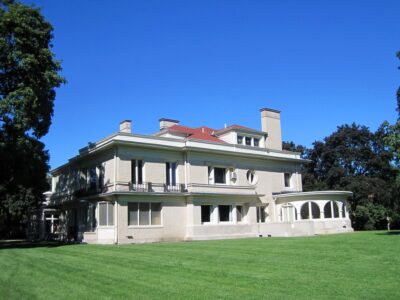
Pleasant House-Oak Park
Maher’s Pleasant Home in Oak Park is a beautiful manifestation of his motif-rhythm theory, integrating design elements with natural motifs.
His Ernest A. Hamill House, also in Oak Park, stands as an elegant example of his approach to the Prairie School, characterized by its stucco exteriors and art glass windows, symbolizing an architectural ode to the Midwestern landscape. (Photo: https://www.flickr.com/photos/teemu08/)
Henry Hobson Richardson: The Innovator of Romanesque Revival
The Glessner House, at 1800 S Prairie Ave, showcases Richardson’s influence on American architecture.

Glessner House
His style emphasizes a fortress-like solidity with its heavy stone façade, setting a stark contrast to the Victorian aesthetics of the time. This building is a pioneer of the Romanesque Revival style, blending medieval European influences with modern American design. (photo: https://www.flickr.com/photos/warrenlemay/)
Dwight H. Perkins: Artistic Expression through Architecture
Perkins’ Stephen Hunt House in Kenwood exemplifies his commitment to the Arts and Crafts movement. This home, with its use of natural materials and expansive windows, represents a dialogue with nature, a radical concept for urban residences.

Stephen Hunt House
Perkins’ designs often feature a unique blend of functionality and artistic expression, making them standouts in Chicago’s architectural history. (Photo: https://www.flickr.com/photos/harryrcarmichael/)
David Adler: The Craftsman of Eclectic Elegance
Adler’s estate in Libertyville is a showcase of his ability to blend diverse historical styles into modern and elegant residences. His use of classical elements, combined with luxurious materials, created homes that were both grand and intimate. Adler’s work is a testament to the versatility and timelessness of Chicago’s residential architecture.
 (Photo of Garage: By Ronincmc – Own work, CC BY-SA 3.0, https://commons.wikimedia.org/w/index.php?curid=21346237)
(Photo of Garage: By Ronincmc – Own work, CC BY-SA 3.0, https://commons.wikimedia.org/w/index.php?curid=21346237)

Adler’s mother’s home
His mother’s home at 1480 N Milwaukee sold in 2018 for $862,800.
Enoch Hill Turnock: Bridging Styles with Ingenuity
Turnock, best known for the Brewster Apartments, was a master at merging different architectural styles. His work on this iconic building at 2800 N Pine
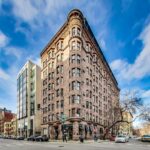
2800 N Pine Grove- The Brewster
Grove Ave demonstrates a unique blend of Victorian and Classical elements, highlighted by its distinctive cage elevators and ornate ironwork, making it a beloved landmark in the Lincoln Park neighborhood.
Solon S. Beman: The Visionary of Industrial Elegance
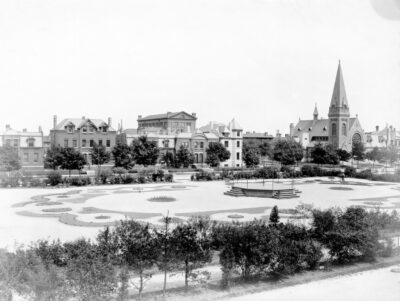
Pullman Park
https://en.wikipedia.org/wiki/Solon_Spencer_Beman
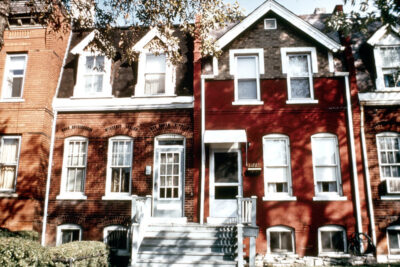
Beman’s work in the Pullman District represented a pioneering approach to community planning and industrial housing. His designs for the town’s residences, especially the executive homes, were revolutionary for their time, featuring modern amenities like indoor plumbing and gas utilities, setting a new standard for workers’ housing.
Pullman Houses: http://collections.carli.illinois.edu/cdm/landingpage/collection/uic_bru
Benjamin Marshall: Architect of Opulence
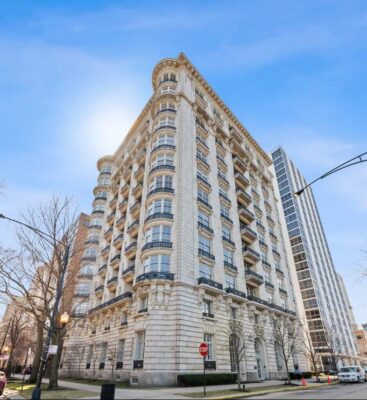
1550 N State Pkwy (Baird & Warner)
The Benjamin Marshall House at 1550 N State Pkwy is a quintessential example of the luxury and grandeur that define the Gold Coast neighborhood. Marshall’s designs are marked by their lavish scale and intricate detailing, catering to the tastes of Chicago’s affluent society and setting a benchmark for luxury residential architecture. (Photo – Baird & Warner)
Bruce Goff: The Radical Organic Architect
Goff’s Ford House in Aurora is a striking example of his unconventional approach. 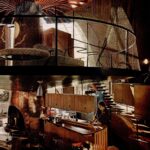 The interlocking hexagons and use of unexpected materials like coal and glass cullets make it a unique architectural statement. Goff’s work challenges traditional norms and encourages a more expressive and individualistic approach to residential design.
The interlocking hexagons and use of unexpected materials like coal and glass cullets make it a unique architectural statement. Goff’s work challenges traditional norms and encourages a more expressive and individualistic approach to residential design.
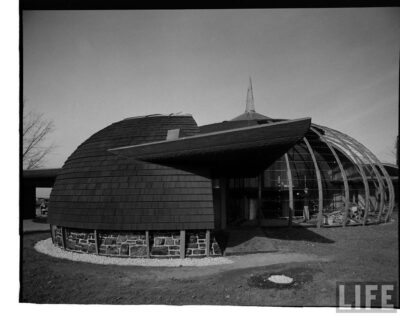
Goff House
(Goff House photos: https://www.flickr.com/photos/midcentarc/)
Harry Weese: A Modernist with a Heart
 Weese’s River Cottages in Chicago exemplify his talent for blending modernist principles with a touch of warmth and human scale. Known for their distinctive triangular shape and thoughtful integration with the riverside setting, these townhouses reflect Weese’s commitment to creating functional yet aesthetically pleasing living spaces. Photo: Marc Teer from Chicago, USA, CC BY 2.0
Weese’s River Cottages in Chicago exemplify his talent for blending modernist principles with a touch of warmth and human scale. Known for their distinctive triangular shape and thoughtful integration with the riverside setting, these townhouses reflect Weese’s commitment to creating functional yet aesthetically pleasing living spaces. Photo: Marc Teer from Chicago, USA, CC BY 2.0
Ludwig Mies van der Rohe: The Proponent of Minimalist Modernism
Mies van der Rohe’s minimalist approach, focusing on the purity of form and the innovative use of modern materials, has left a profound impact on Chicago’s architectural scene.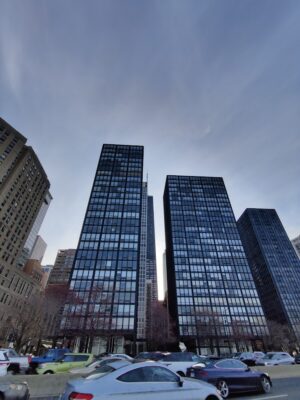
His residential designs, though fewer in number, continue to inspire architects for their open spaces and transparency, embodying the ethos of less is more. 860-880 photos: https://www.archdaily.com/59487/ad-classics-860-880-lake-shore-drive-mies-van-der-rohe/5037dd7628ba0d599b000066-ad-classics-860-880-lake-shore-drive-mies-van-der-rohe-photo
Jeanne Gang: Shaping the Contemporary Skyline

Jeanne Gang’s Aqua Tower is not just a high-rise; it’s a sculpture in the skyline. Its undulating balconies, inspired by the fluidity of water, break the mold of conventional skyscraper design.
This building, along with her other works, signifies a new era in Chicago’s architectural narrative, where functionality meets environmental consciousness and aesthetic innovation.
In Closing
From Wright’s Prairie Style homes to Gang’s modern skyscrapers, each architect has contributed a unique chapter to Chicago’s architectural story. Their homes are more than just places to live; they are enduring symbols of a city’s rich cultural and historical tapestry. For anyone passionate about architecture or seeking to own a piece of history, these homes offer a glimpse into the artistic and innovative spirit that defines Chicago.

